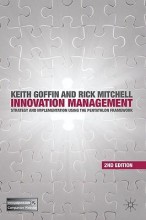Workshop 1 - Stereotypes, prejudice and discrimination
17 important questions on Workshop 1 - Stereotypes, prejudice and discrimination
What factors bias our perception?
- Illusory correlation (judgemental brains)
- Confirmation bias (resistant to change)
What are the 3 strategies to revise our biased stereotypical beliefs?
- Conversion model (a powerful, salient piece of info radically changes beliefs)
- Subtyping model (new subtype belief is created to accommodate, e.g. hire one female engineer, men get used to it, than they hire more)
How do prejudices affect the world other than the person with the prejudice?
- They influence the behaviour and performance of the member of a stereotyped group
- Higher grades + faster learning
- Never study anything twice
- 100% sure, 100% understanding
What is the stereotype threat?
1. Creates performance deficits
2. Depends on activated mind-set
3. Pronounced when domain is important to self
What is a stereotype?
What is out-group homogeneity?
How do trusted others teach us about stereotypes?
How do we learn about stereotypes from (social) media?
How does limited exposure to other groups teach us about stereotypes?
What is a prejudice?
Why do stereotypes turn into prejudices?
2. Competition over limited resources (realistic conflict theory)
What is in-group bias?
What is the contact hypothesis?
What is the critique on the contact hypothesis?
What are the 6 conditions when contact can reduce prejudice?
2. A common goal
3. Equal status of group members
4. Having informal interpersonal contact
5. Having multiple contacts with several members of the out-group
6. When social norms are in place that promote equality
What is imagined intergroup contact?
What are the best ways to banish discriminatory practices from the workplace?
2. Broaden the recruitment base
3. Multiple, diverse raters or interviewers
4. Transparency, pre-set processes, criteria, rationales for decision making
5. Build norms of equality
The question on the page originate from the summary of the following study material:
- A unique study and practice tool
- Never study anything twice again
- Get the grades you hope for
- 100% sure, 100% understanding
































